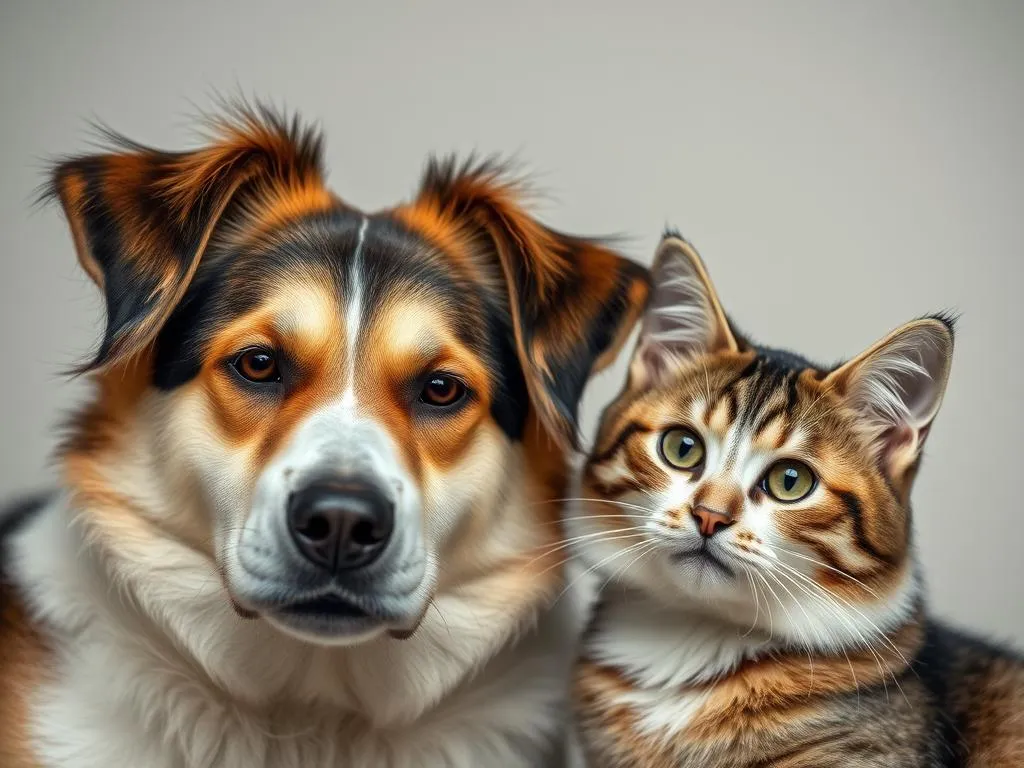
Creating a harmonious household where both dogs and cats coexist peacefully can be a rewarding yet challenging process. The bond between these two popular pets is often overshadowed by stereotypes and misconceptions. However, with patience and the right approach, you can foster a friendship between your dog and cat. In this guide, we will explore effective strategies and insights on how to make a dog and cat friends.
Understanding Pet Behavior
Dogs and Their Social Nature
Dogs are inherently social animals, often characterized by their pack mentality. This instinct drives them to seek companionship and establish relationships, not just with humans but with other animals too. Understanding your dog’s communication signals, such as body language and barking, is crucial when introducing them to a cat. For instance, a wagging tail usually indicates excitement and friendliness, while stiff body posture may signal discomfort or aggression.
Cats and Their Independent Nature
Contrary to dogs, cats are more independent and possess strong territorial instincts. They often view their home as their domain and can be wary of new animals entering their space. Understanding feline communication is equally important. Cats use body language—like tail positioning, ear orientation, and even vocalizations—to express themselves. A relaxed cat may have a slow-blinking gaze, while an arched back and hissing indicate fear or aggression.
Common Misunderstandings
Many people hold onto stereotypes about dogs and cats being natural enemies. This misunderstanding can hinder the integration process. Dogs are sometimes seen as overly energetic and aggressive, while cats are viewed as aloof. By overcoming these preconceived notions, you can create a more conducive environment for friendship. Recognizing that both animals have unique personalities can help you tailor your approach to their integration.
Preparing for the Introduction
Assessing Your Pets’ Temperament
Before introducing your dog and cat, it’s essential to assess their individual temperaments. Look for personality traits that might influence their interactions. Is your dog friendly and calm, or is he prone to barking and jumping? Is your cat adventurous or shy? Recognizing signs of stress or aggression in both pets will help you plan the introduction effectively.
Creating a Safe Space
A neutral introduction area is vital for a successful meeting. Avoid introducing them in a space that either animal considers their territory, as this can lead to defensive behavior. Set up separate areas for each pet, allowing them to feel secure and comfortable. Providing hiding spots and safe retreats for your cat can help ease anxiety during the initial meeting.
Gathering Necessary Supplies
Having the right supplies on hand can make the introduction smoother. Consider using leashes for your dog to maintain control and prevent sudden lunges. Baby gates can help separate spaces while allowing them to see and smell each other without direct contact. Treats are also essential for positive reinforcement during the introduction process.
The Introduction Process
Initial Meeting
The first meeting between your dog and cat should be approached with care. Start by keeping your dog on a leash, allowing your cat to approach at their own pace. Keep the session short and positive; ideally, it should last no longer than 10-15 minutes. If either pet appears stressed, end the session and try again later. Your demeanor is crucial; remain calm and controlled to foster a positive atmosphere.
Monitoring Body Language
During the introduction, pay close attention to both pets’ body language. Signs of acceptance include relaxed postures, wagging tails from the dog, and slow blinks or purring from the cat. Conversely, if you notice aggressive behaviors—like growling, hissing, or stiff postures—it’s essential to intervene immediately. Redirect your dog’s attention or give your cat a safe space to retreat.
Gradual Interaction
Once both pets seem comfortable, you can start to encourage gradual interactions. Use positive reinforcement to reward good behavior, such as giving treats when they remain calm in each other’s presence. Schedule these interactions regularly, gradually increasing the duration and frequency. This gradual exposure helps build trust and reduces anxiety.
Establishing a Routine
Shared Spaces
As your pets become more comfortable with each other, you can gradually allow them to share common areas in your home. Supervised interactions are crucial during this phase; never leave them unsupervised until you are confident in their behavior around each other. Monitor their interactions closely to ensure they remain safe and positive.
Joint Activities
Incorporating joint activities can further strengthen their bond. Playtime can be a great way for your pets to interact in a fun setting. Consider engaging them in activities that allow both to participate, such as tossing a toy back and forth or training sessions that involve both pets. This not only promotes teamwork but also helps improve their social skills.
Maintaining Separate Identities
While fostering a friendship, it’s essential to ensure that each pet maintains their own identity. Provide separate spaces and belongings for your dog and cat. This approach can prevent jealousy and help each pet feel secure in their environment. Balancing attention between the two is also crucial to avoid any feelings of neglect or rivalry.
Troubleshooting Common Issues
Aggression or Fear
If you notice signs of aggression or fear, take a step back and reassess the situation. Understanding the triggers for these behaviors is key. It could be a specific action from the other pet or an external noise. Address these triggers by creating a more controlled environment and gradually reintroducing them to each other. In some cases, seeking professional help from a veterinarian or animal behaviorist may be necessary.
Reverting Behaviors
It’s not uncommon for pets to have setbacks in their interactions. If you experience reverting behaviors, such as sudden aggression or fear, don’t be discouraged. Go back to basics by reintroducing each pet gradually, reinforcing positive behavior through treats and praise. Consistency is vital in these moments to rebuild trust and confidence.
Long-term Strategies
To ensure a long-lasting bond between your dog and cat, implement long-term strategies for socialization. Regularly engage in shared activities and maintain a routine that includes both pets. Continually monitor their interactions and adjust your approach as necessary. Building a lasting friendship takes time and patience, but the rewards are well worth the effort.
Success Stories and Case Studies
Real-life Examples
Many pet owners have successfully navigated the journey of making their dog and cat friends. For instance, one owner shared how their previously aggressive dog learned to coexist peacefully with a once-timid cat. By following the steps outlined above, they created an environment where both pets felt safe and loved, ultimately forming a strong bond.
Expert Opinions
Veterinarians and animal behaviorists often emphasize the importance of understanding each pet’s unique personality when fostering friendships. Their insights suggest that patience and consistent positive reinforcement can significantly contribute to successful integrations. Many experts recommend seeking professional guidance if you encounter persistent issues during introductions.
Conclusion
Fostering a friendship between your dog and cat is a rewarding journey that requires understanding, patience, and consistent effort. By recognizing the unique behaviors of each pet and following a structured approach, you can create a harmonious multi-pet household. Remember to be patient and observant, as the process may take time. Ultimately, the benefits of a peaceful coexistence—such as reduced stress and enhanced companionship—will enrich your life and the lives of your beloved pets.









